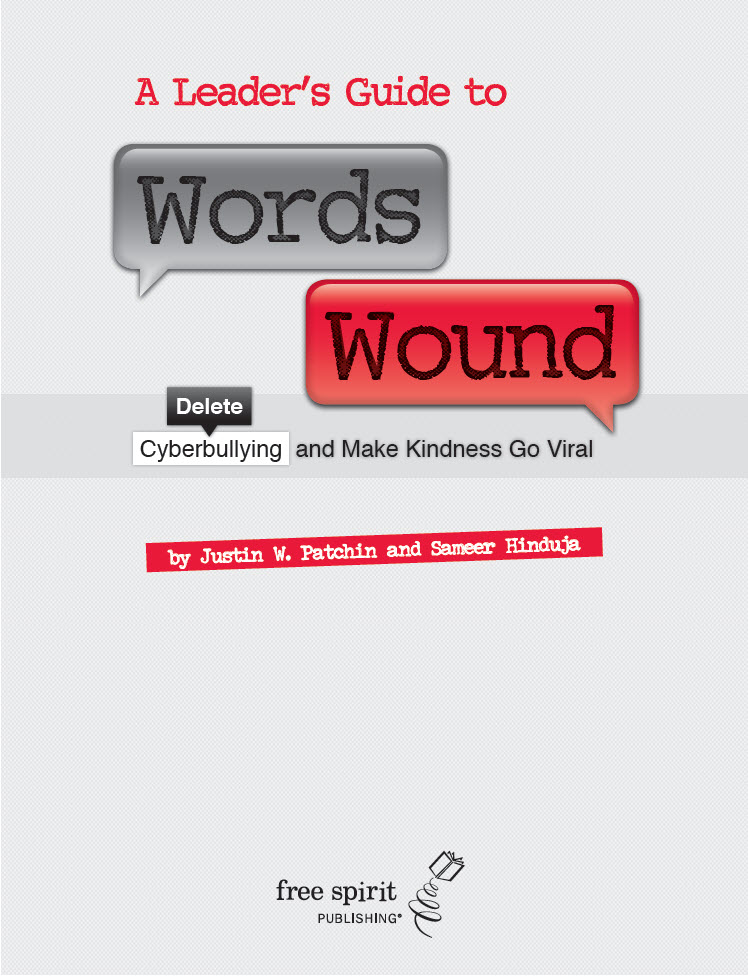
Whether you teach in the classroom, lead a youth group, or work with teens in another setting, Words Wound can help you guide your young people as they learn about cyberbullying, consider their own attitudes and actions (and those of others), and think about ways to delete cyberbullying and make kindness go viral. This leader’s guide can help you use Words Wound to inspire productive discussion, engage teens in reflection, explore useful strategies for dealing with online bullying, and work toward building a culture of greater kindness and respect.
The sections of this guide match up with the chapters of Words Wound. Each section includes a general overview of the information covered along with specific learning objectives, discussion questions, and other activities that can be used with the group or assigned for group members to complete at home. The “Fill in the Blank” worksheets can be used to help guide readers through the material, while the “Make Your Choice” quizzes can be used to assess their comprehension of the information. In addition, both are helpful in prompting and continuing the conversation surrounding these issues. Other features of the guide include “Think About It, Talk About It” discussion questions for every chapter, as well as a handful of “Status Update” activities and “Puzzler” pieces that you’ll find at the end of the guide, which can be used with any chapter or section of the book.
Feel free to use the guide in whatever order and manner works best for you and your group. For example, the “Think About It, Talk About It” sections can help foster quick but meaningful conversations even if you don’t have a lot of time with your group. For deeper investigation, you may want to turn to the “Status Update” activities. And when you have some time to fill at the end of a class or meeting—or when group members need a breather—“Puzzler” activities can provide a light but still stimulating break. Depending on the ages, interests, and needs of your group members, each of these features may be more or less suited to your situation. You make the call and use what’s right for your group.
We firmly believe that teens have the most power to stem the tide of cyberbullying. However, we also know—from our own experience and the feedback educators and parents have given us—that they often need encouragement, guidance, leadership, and modeling from the adults in their lives. And even the most motivated teens may hesitate for a number of reasons, such as the fear of failure or rejection, a sense of powerlessness, or a lack of information and practical strategies. As an adult who cares about young people, you are in a great position to spark an interest in teens to tackle this problem. Now, we ask you to take the next step—identify your group, rally them together, and help them in their efforts to make positive changes in their own lives and in those of their friends, in their schools, in their communities, and beyond. And be sure to visit wordswound.org for more information and inspiration!







